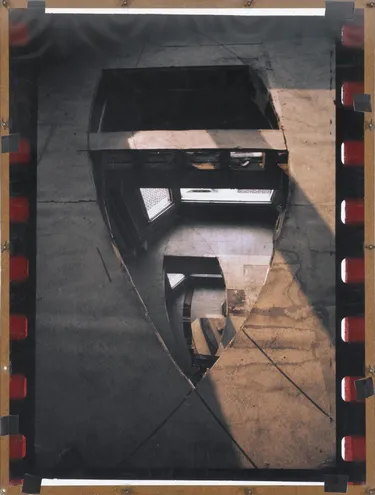Gordon Matta-Clark

About the Artist
A central figure in the American art scene of the 1970s, Gordon Matta-Clark (1943–1978) was a pioneer of a radical approach to art that engaged with the urban context and its communities. His practice erased the boundaries between art, private life, and public space. Founder of the restaurant Food in Soho, which became a hub for the New York artistic community, Matta-Clark applied his architectural studies to create a collective called Anarchitecture. As the group's name suggests, his approach to architecture was anarchic and critical of the system, aiming to highlight the socio-economic contradictions underlying urban development.
Matta-Clark’s intense artistic career spanned from 1971 to his untimely death in 1978. During this brief period, he worked on abandoned buildings, cutting through, perforating, or removing walls and other architectural elements. These interventions, sometimes monumental in scale, were carried out on structures slated for demolition. Through his actions, the artist transformed these buildings into commentaries on the inevitable temporality of architecture and the subversion of its fundamental principles. The manipulated structures became sites of unprecedented visual perspectives, created by breaching their frameworks or segmenting spaces typically hidden from human view. These works were documented through photographs, films, and videos, which Matta-Clark conceived as independent art pieces. Along with fragments extracted from some of the buildings, these remain the only surviving evidence of his work.
Office Baroque
1977
Color cibachrome print in original artist's frame
Office Baroque was one of Matta-Clark’s last architectural projects, involving a series of cuts and removals in a five-story office building in Antwerp. Inspired by overlapping circular marks left by teacups on a drawing, the cuts in the building took the form of two rhythmically arched semicircles traversing the floors. Their intersection created a shape reminiscent of a rowboat. Matta-Clark described the work as “a walk through a panoramic arabesque.”
As in all his interventions, the building itself was the artwork. To counter the ephemeral nature of his sculptural gestures, Matta-Clark documented them through unique photographs created by layering and assembling negatives, producing images reminiscent of Cubist spatial overlays. These photographs were treated as singular, unrepeatable works of art, embodying a vision that simultaneously records, creates, and transforms spaces, objects, and their representations.